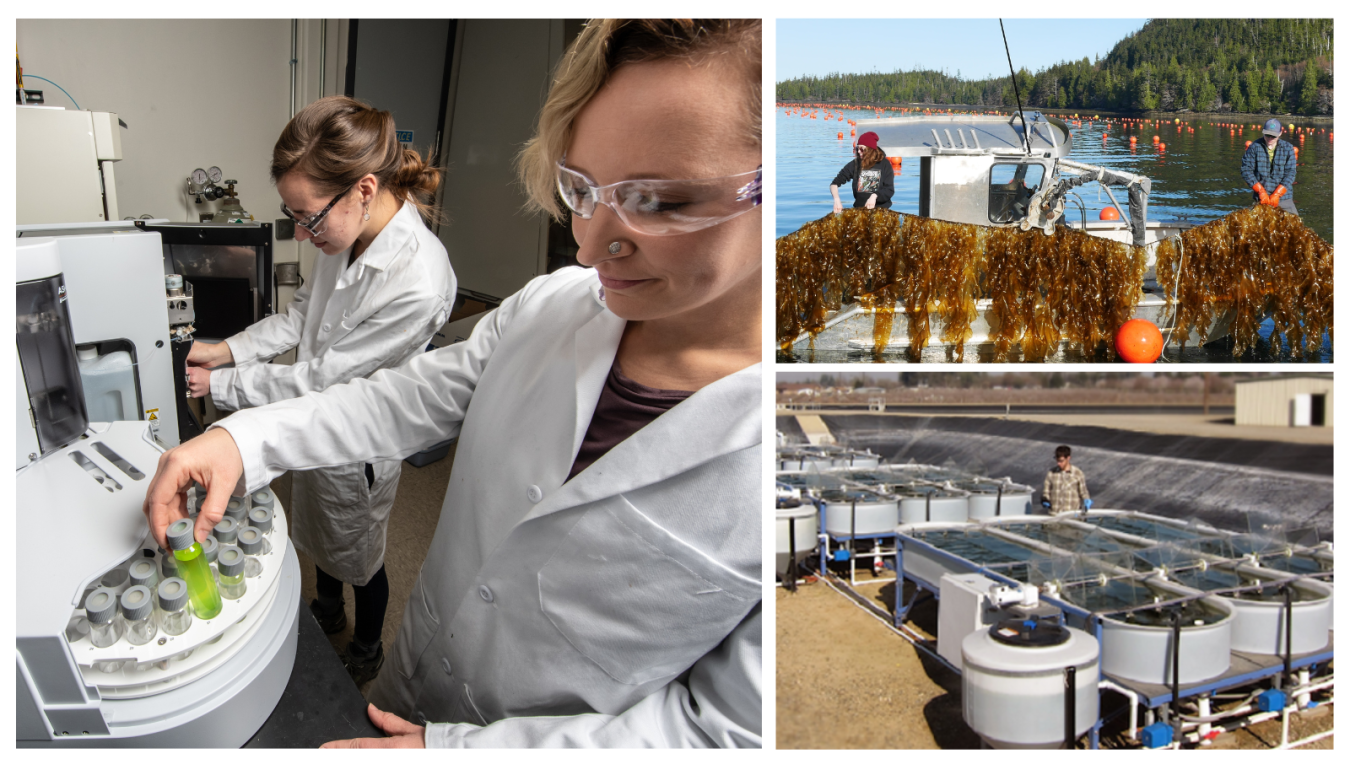Fifteen student teams from across the country were selected as finalists for the AlgaePrize 2023–2025 competition. As the nation’s premier algal-based student research competition, the AlgaePrize challenges students to pursue innovative ideas for the development, design, and invention of technologies within the commercial algae value chain. The 15 teams are presently conducting their proposed research and will provide research updates over the next few months. As we follow their progress, below are three facts to fuel your algae curiosity.
May 29, 2024
Algae, including macroalgae (upper right photo) and microalgae (left and lower right photos), are versatile organisms that produce biomass that could help the nation meet its clean energy goals. Photos courtesy of Jordan Hollarsmith, National Oceanic and Atmospheric Administration; Dennis Schroeder, National Renewable Energy Laboratory; and MicroBio Engineering.
With the power to simultaneously fuel our airplanes, recycle carbon dioxide, provide nutrition for animals and humans, and create jobs for millions of Americans, algae matters to the U.S. clean energy economy!
Fifteen student teams from across the country were selected as finalists for the AlgaePrize 2023–2025 competition. As the nation’s premier algal-based student research competition, the AlgaePrize challenges students to pursue innovative ideas for the development, design, and invention of technologies within the commercial algae value chain.
The 15 teams are presently conducting their proposed research and will provide updates over the next few months. As we follow their progress, below are three facts to fuel your algae curiosity.
The United States has the potential to produce 250 million tons of algal biomass annually
The 2023 Billion-Ton Report is the 4th in a series of assessments of potential biomass resources available in the United States, and for the first time, the report includes algae in its estimates. It concludes that both microalgae and macroalgae could be available at scale with technological innovations, contributing to a larger national potential to produce as much as 1.7 billion tons of biomass every year—more than enough biomass to meet the energy goals of the federal government’s Sustainable Aviation Fuel Grand Challenge and the Clean Fuels & Products Shot™.
Targeted research is key to unlocking the energy potential of algae
Targeted advances are needed to help algal fuels and bioproducts break into the wider commercial market, which is why scientists like the National Renewable Energy Laboratory’s Jianping Yu, Stefanie Van Wychen, and Tao Dong are so important. Using diverse research tools—like genetic engineering, analysis, and material science—scientists advance how algae are produced, processed, and transformed into the next generation of sustainable fuels and products.
Advanced models can help growers cultivate algae better
To use microalgae commercially for biofuels production, they must be grown and cultivated in economic, large-scale systems, in diverse geographic regions, and during different seasons. Together, these factors can create uncertainty for commercial producers. Fortunately, powerful modeling tools from Pacific Northwest National Laboratory can help future algae growers make better decisions for steady microalgae growth and supply—improving seven-day forecasting by 60%.
The AlgaePrize is an American-Made Challenge, sponsored by the U.S. Department of Energy Bioenergy Technologies Office (BETO), which is working to build the algae bioeconomy of the future where fossil fuels could be replaced with a renewable, abundant, and flexible source of energy.
Learn more about AlgaePrize 2023–2025 and follow #AlgaePrize on social media to track the student teams’ progress!

